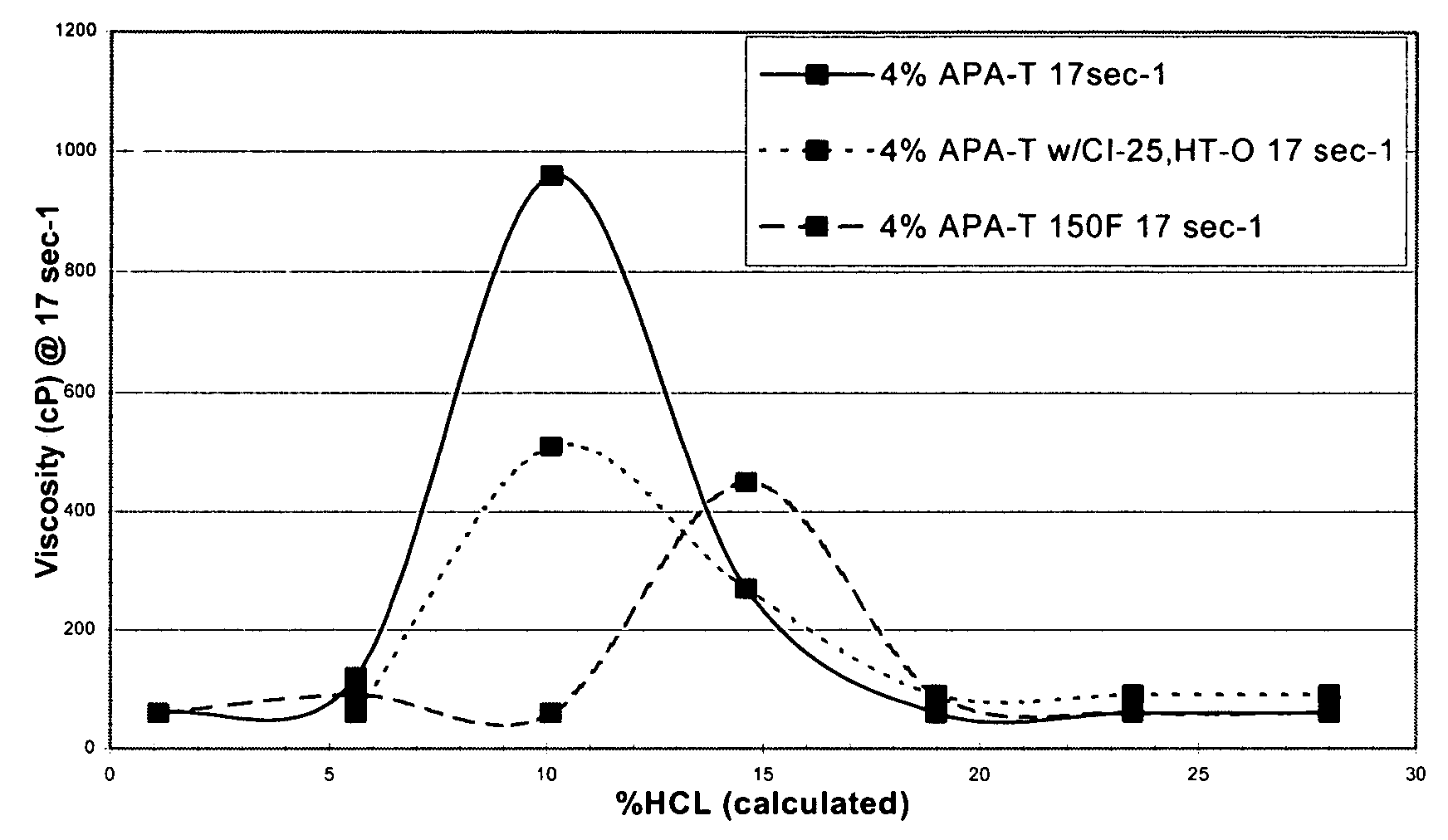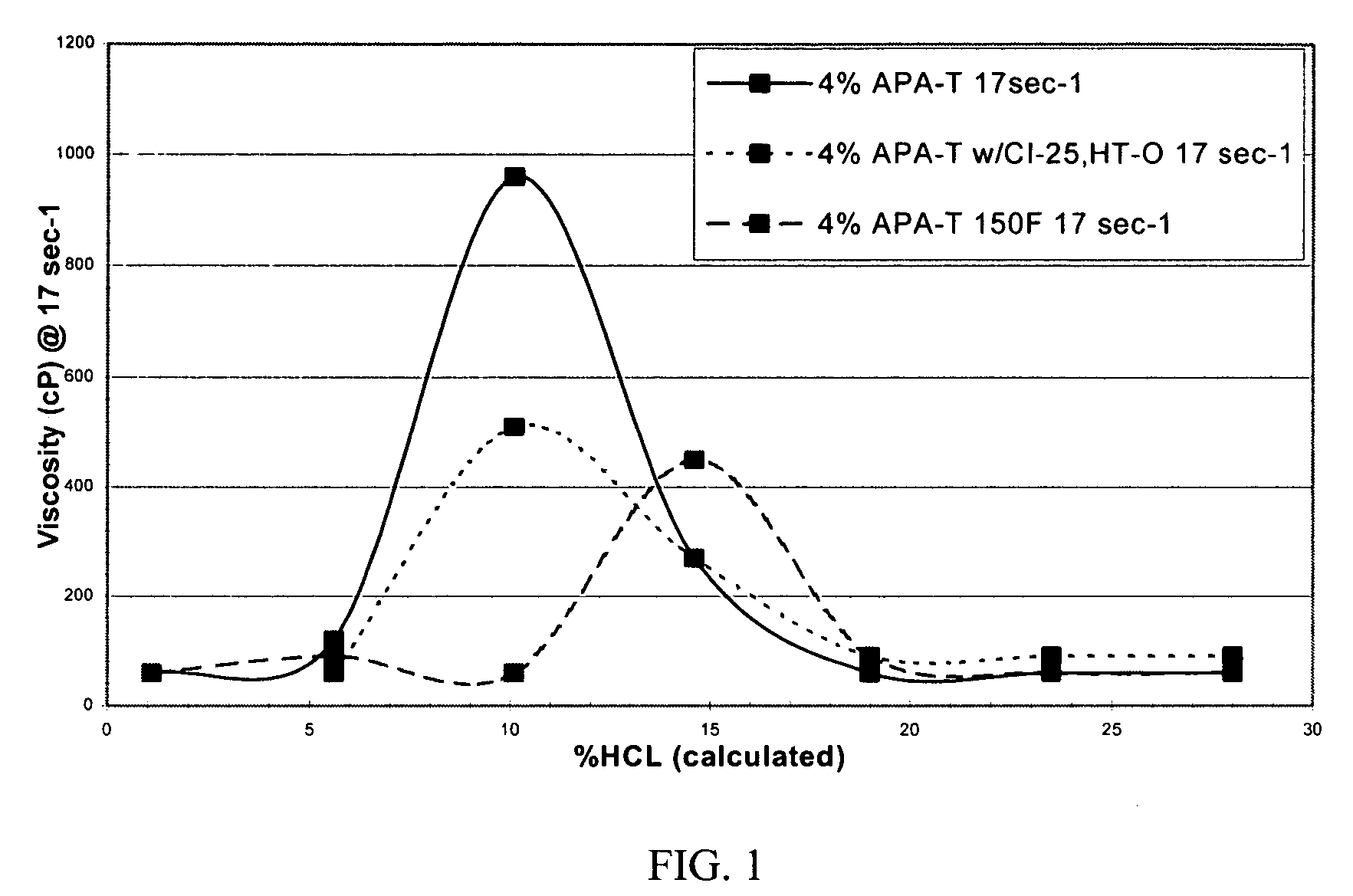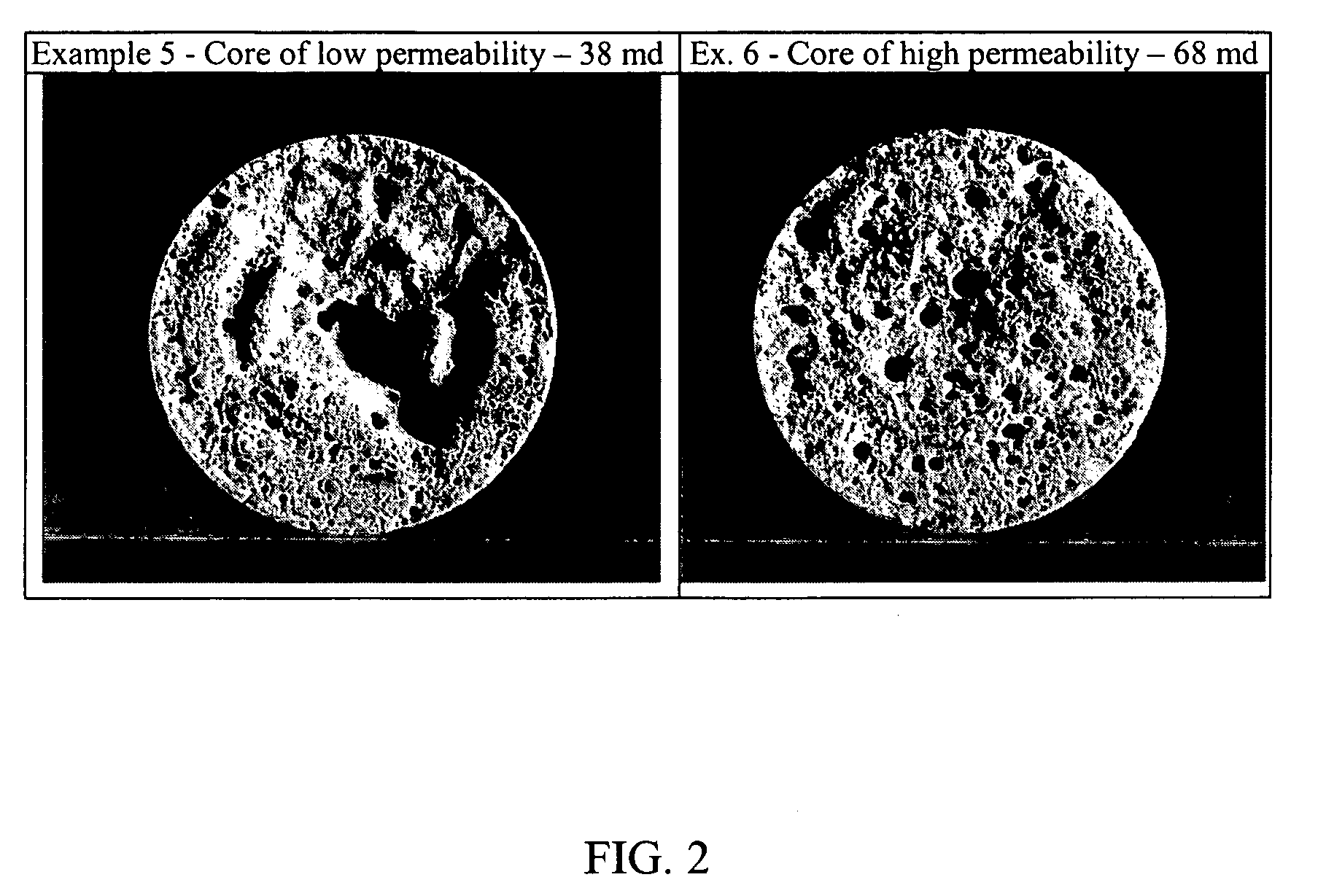Method of acidizing a subterranean formation with diverting foam or fluid
a technology of subterranean formations and foams, applied in fluid removal, chemistry apparatus and processes, boreholes/well accessories, etc., can solve the problems of limiting the effectiveness of very near-wellbore applications, lacked control mechanisms in acidizing formulations of the prior art, and failure to precisely control the flow of acidizing fluids, etc., to achieve the effect of increasing the viscosity of fluid or foam, increasing the viscosity, and increasing the viscosity
- Summary
- Abstract
- Description
- Claims
- Application Information
AI Technical Summary
Benefits of technology
Problems solved by technology
Method used
Image
Examples
example 1
Acid Spending Test
[0059]15 ml. of APA-T were introduced to 250 ml of 28% HCl on a stirring plate. The temperature was maintained at ambient. To the mixture was added calcium carbonate in 17.5 grams increments. The calcium chloride was added slowly to the acid to minimize bubbling of the fluid. After the addition of each increment the resulting mixture was then transferred to a Chandler 3500 viscometer having an R1B1 bob and cup assembly. The viscosity was then measured at 300 rpm (511 sec−1), as was the amount of calculated acid in the mixture. The results are set forth in Table I:
[0060]
TABLE INo. of CalciumViscosity @Acid Concentration,Carbonate Increments511 sec−1, cPVolume %022812242181935415416510.65136
[0061]The results establish that APA-T exhibits acid spending behavior required by diverting agents. The low initial viscosity allows the acid to be easily pumped into cores with the acid being spent as the viscosity of the composition increases. Thus, when the acid enters the hig...
example 2
Acid Spending Test
[0062]A 250 ml solution containing 4% (by volume) APA-T and 28% HCl was prepared at ambient temperature. In addition, a solution containing 4% (by volume) APA-T with 10 gpt CI-25 and 10 gpt HY-TEMP O was also prepared at ambient temperature. (The term “gpt” refers to gallons per 1000 gallons of fluid and cP refers to the viscosity units of centipoise.)
[0063]The viscosity was then measured by a Chandler 3500 viscometer at 10 rpm or a shear rate of 17 sec−1. The results, illustrated in FIG. 1, show that the initial viscosity of the mixture is low, allowing the acid to be easily pumped into the formation.
[0064]At ambient temperature, the amidoamine oxide in 28% hydrochloric acid has an initial viscosity of approximately 60 cP. The fluid viscosity increases to 270 and 960 cP as the acid spends to 15% and 10% acid, respectively.
[0065]The amidoamine oxide in 28% hydrochloric acid with 10 gpt of a corrosion inhibitor and 10 gpt of an intensifier exhibited an initial visco...
example no.9
EXAMPLE NO. 9
Acid Thickening Test
[0074]20 ml. of APA-T were introduced to 250 ml of 20% HCl on a stirring plate and mixed for one hour. The temperature was maintained at ambient. The resulting mixture was then transferred to a Chandler 35 viscometer cup. The viscosity was then measured at rates ranging from 1 rpm (1.7 sec−1) to 300 rpm (511 sec−1). The test was then repeated with 15% HCl, 10% HCl, 5.7% HCl and 3% HCl. The results are set forth in FIG. 3.
[0075]The results indicate that at the stated HCl concentrations, APA-T develops sufficient viscosity for use as a thickened acid gelling agent for diversion. The high viscosity acid gels on mixing. The thickened acid pumped enters the high permeability zones, reduces fluid flow to that portion of the formation, thereby forcing the following acid fluid to lower permeability zones.
PUM
| Property | Measurement | Unit |
|---|---|---|
| volume percent | aaaaa | aaaaa |
| volume percent | aaaaa | aaaaa |
| volume percent | aaaaa | aaaaa |
Abstract
Description
Claims
Application Information
 Login to View More
Login to View More - R&D
- Intellectual Property
- Life Sciences
- Materials
- Tech Scout
- Unparalleled Data Quality
- Higher Quality Content
- 60% Fewer Hallucinations
Browse by: Latest US Patents, China's latest patents, Technical Efficacy Thesaurus, Application Domain, Technology Topic, Popular Technical Reports.
© 2025 PatSnap. All rights reserved.Legal|Privacy policy|Modern Slavery Act Transparency Statement|Sitemap|About US| Contact US: help@patsnap.com



